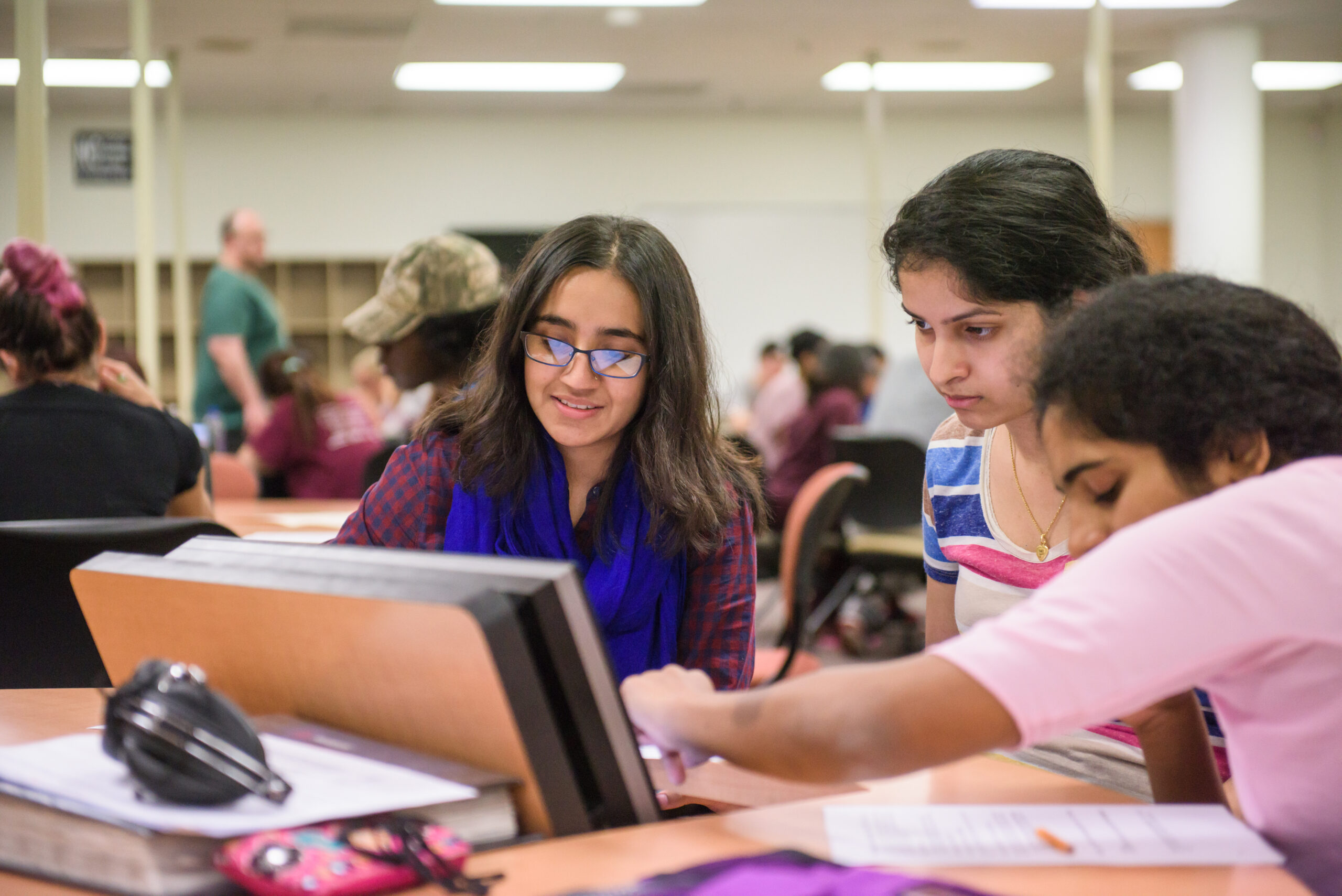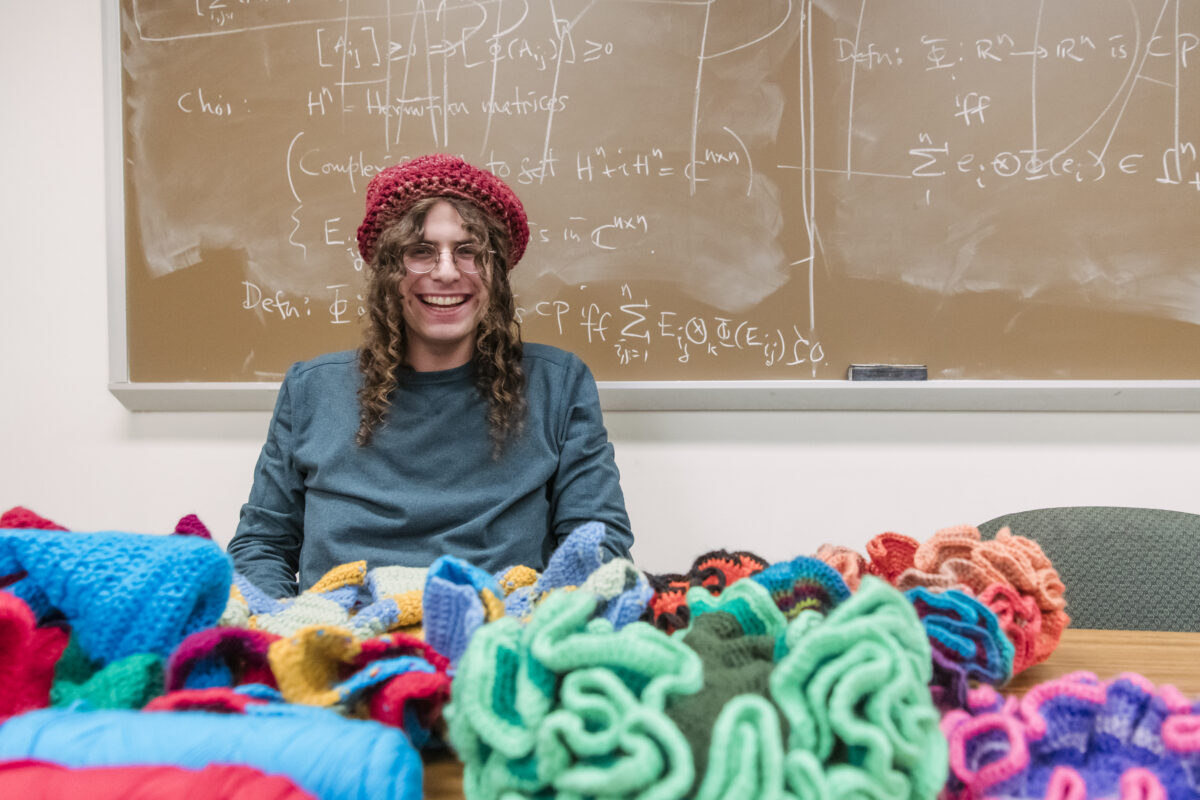UMBC welcomes a large number of students from community colleges every semester, including in STEM majors. To better support these students, UMBC partnered with Anne Arundel Community College, Community College of Baltimore County, Howard Community College, and Montgomery College to develop and implement the STEM Transfer Student Success Initiative (t-STEM). This initiative was sponsored by the Provost’s office and initially funded by the Bill & Melinda Gates Foundation.
Too often, efforts in higher education to support transfer students are grounded in a “deficit model,” focusing on assumed needs or gaps, says Sarah Jewett, executive director of t-STEM at UMBC. She sees things differently.
“I was really interested in looking at transfer from an asset-based perspective,” Jewett says. “Transfer students bring so many experiences and talents to this campus, just like every other student, and I think those strengths need to be recognized and tapped.”
When looking at factors that challenge transfer student success, Jewett suggests, “Rather than asking, ‘What do you not have?’ we should be asking, ‘What are we not doing?’” Figuring out the best plan forward depended on important collaborative work from the Office of Undergraduate Education, Off-Campus Student Services, the Office for Academic and Pre-Professional Advising, and the College of Natural and Mathematical Sciences, all of which sponsored important outcomes of the Initiative, and helped to develop key processes, resources, and services.
Strong foundations
An asset-based approach opened the door to forming strong relationships between UMBC and partner community colleges. “The whole t-STEM project was really about building foundational relationships between students, colleagues, and institutions,” explains Jewett. “That was our initial goal in all of this—to build those relationships in ways that felt real to people.”
Working collaboratively within and across institutions, t-STEM provided access to customized advising, peer networks, and a range of resources for transfer students both before and after their transition. With the support of staff from the Division of Information Technology and Common Vision, the team was able to create and deliver an online library of instructional resources, interactive tools, animated videos, and student/faculty testimonials.
That collaborative approach made it possible to pilot solutions to longstanding problems, like aligning curricula across campuses. Could a student who successfully completed courses at a community college smoothly move forward in the next level of those subjects at UMBC? If not, how could partner institutions work together to better support that transition?
A great quintet
With support from Bill LaCourse, dean of the College of Natural and Mathematical Sciences and professor of chemistry at UMBC, faculty from UMBC and partner community colleges began by examining introductory chemistry.
Rather than simply check if topics listed on a UMBC syllabus were also listed on community college syllabi, teams of instructors engaged in meaningful conversation around all aspects of teaching and learning introductory chemistry. Partners from all five institutions published their results in the Journal of Chemical Education, providing a model for other institutions to follow.
“The chemistry curriculum alignment was groundbreaking, as everything was evaluated for alignment: curriculum, pedagogy, assessment, course policies, facilities,” says Patti Turner ’74, biological sciences, and professor of anatomy and physiology at Howard Community College.
“The process played out like a great quintet,” adds Margaret Latimer, vice president and provost at Montgomery College. “Each of the five colleges was heard and the faculty developed a rhythm as they worked together to ensure that students would be successful and meet expected standards.”
Both UMBC and the community colleges made changes to help ensure the success of transfer students in chemistry. For example, students were advised to take introductory course sequences at the same institution in order to avoid missing key course content. Additionally, participating faculty at the community colleges began including a few multiple-choice questions on their tests to better prepare students for assessments in large classes at UMBC, and UMBC faculty added open-response questions.
Ongoing growth
For faculty, “The project has enabled us to create long-standing relationships that make working on other projects seamless,” says Turner. “Because we worked really hard on building those relationships, and didn’t rush them, they’re still around, and they’re being leveraged for new opportunities,” adds Jewett.
“UMBC is in a unique position to support transfer students because of our foundation in inclusive excellence,” says Jewett. “The attention to transfer students has really grown in my time here,” she adds, but as UMBC president Freeman Hrabowski is known to say, “Success is never final.”
In that spirit, the current focus of UMBC and our community college partners is leveraging the t-STEM partnership for new and innovative proposals to support transfer success across the disciplines. “We still have a lot of work to do,” Jewett says. “There’s always work to be done.”
Image: Students work together at UMBC’s CNMS Active Science Teaching and Learning Environment (CASTLE). Photo by Marlayna Demond ’11 for UMBC.
Tags: ChemBiochem, CNMS




